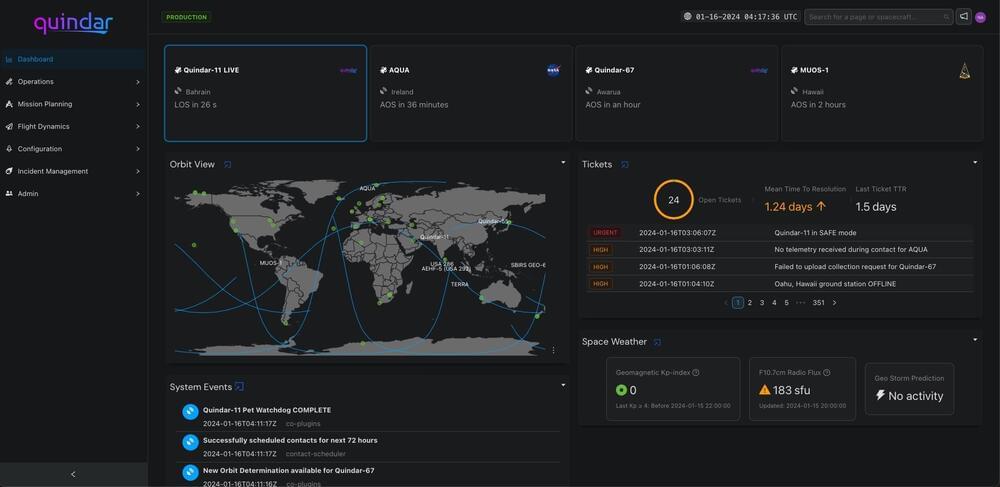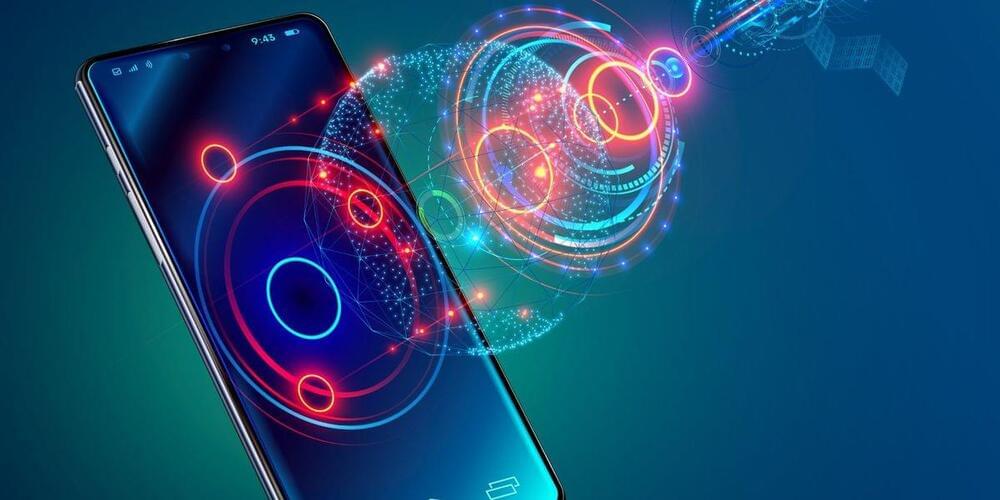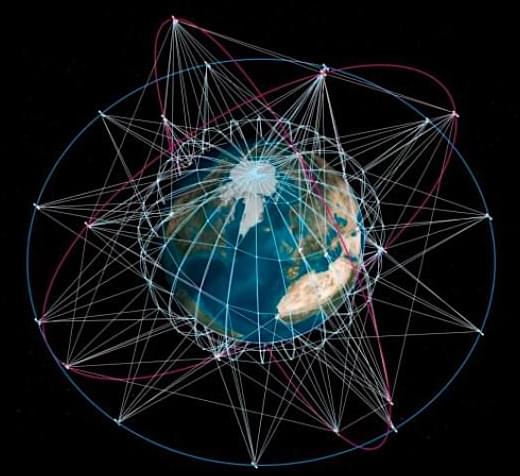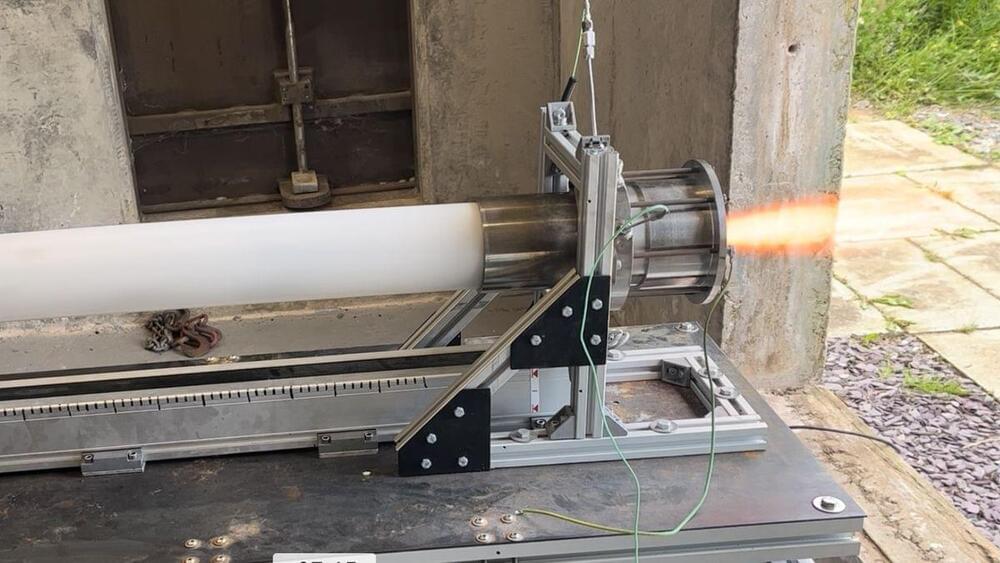New LISA satellite trio will be able to detect the forgotten ‘middle children’ of the black hole family.
Category: satellites – Page 38
BlackSky’s AI powered intelligence satellite will soon monitor Earth
BlackSky is close to completing its SMART satellite network which uses AI to revolutionize global monitoring and security with unprecedented efficiency.
BlackSky has won Phase III of IARPA’s SMART program to develop the U.S. agency’s AI-driven satellites for global monitoring.
SpaceX to launch NASA’s PACE ocean-monitoring satellite this week
Liftoff is scheduled for 1:33 a.m. ET on Tuesday (Feb. 6).

Quindar raises $6 million for automation of satellite constellation operations
WASHINGTON — Quindar has raised an additional $6 million to further development of software to automate operations of satellite constellations.
The company announced Jan. 30 that it closed $6 million in funding as an extension to a $2.5 million seed round it announced a year ago. Venture capital firm Fuse led the round with participation from existing investors Y Combinator and Founders Fund.
Quindar has developed software designed to automate satellite operations. The company says it has validated that system with an unnamed customer who is using it to manage a growing fleet of spacecraft.

Decay of sunspot pair elucidates properties of nearby moving magnetic features
Scientists studying sunspots have found important clues about magnetic features in their decay that will help understand the evolution and real origin of these mysterious magnetic phenomena. The findings are published in The Astrophysical Journal.
Understanding sunspots is crucial to understanding the solar cycle, the approximately 11-year periodic change that changes the sun’s energy output and the frequency and intensity of flares it sends into space that can negatively influence satellites and electrical networks on Earth. (The solar “cycle” can range from eight to 14 years in length.)
Sunspots look rather simple from a distance but are complex areas where light from the sun is trapped by twisted magnetic fields. They are temporary regions of reduced temperature that appear as dark spots on the surface of the sun, where constricted magnetic flux suppresses convection that brings the inner heat of the sun to the surface. A sunspot is about the size of the Earth, and they often come in pairs.


SES, Eutelsat, Hispasat: Why we’re investing in Europe’s Iris2 constellation; Starlink & Kuiper are problems for us
BRUSSELS — Three of Europe’s biggest satellite fleet operators — SES, Eutelsat and Hispasat — explained why they are investing in the European Commission’s Iris2 multi-orbit satellite constellation, designed as a public-private partnership with the Commission and the 22-nation European Space Agency (ESA).
Three weeks before their SpaceRise consortium’s best-and-final bid is due, these companies said Iris2 gives them part ownership in a global medium-and low-Earth-orbit network whose capex is mainly government funded.
To view the entire article, become a subscriber!

Watch this self-eating rocket prototype engine consume itself then explode (video)
Would come in handy! More room for payloads too!
British researchers have tested a prototype self-eating rocket that could pave the way for cheaper launches of small satellites and would leave no debris behind.
The concept rocket engine, called Ouroborous-3 after the ancient mythical creature that eats its own tail, was developed by a team of researchers at the University of Glasgow in the U.K.

New satellite capable of measuring Earth precipitation from space
Measuring the amount of precipitation that falls in a specific location is simple if that location has a device designed to accurately record and transmit precipitation data. In contrast, measuring the amount and type of precipitation that falls to Earth in every location is logistically quite difficult. Importantly, this information could provide a wealth of data for characterizing and predicting Earth’s water, energy and biogeochemical cycles.
Scientists from the China Meteorological Administration developed and launched a satellite created to measure Earth precipitation with radar while orbiting in space.
This is the first of two precipitation missions planned by the team to accurately measure the occurrence, type and intensity of any precipitation across the world, including over oceans and complex terrain. Specifically, the FY-3G satellite is designed to assess the 3-dimensional (3D) form of rainfall and other precipitation for weather systems at Earth’s middle and lower latitudes.

Webb Telescope captures massive star-forming complex
This image from the NASA/ESA/CSA James Webb Space Telescope features an H II region in the Large Magellanic Cloud (LMC), a satellite galaxy of our Milky Way. This nebula, known as N79, is a region of interstellar atomic hydrogen that is ionized, captured here by Webb’s Mid-InfraRed Instrument (MIRI).
N79 is a massive star-forming complex spanning roughly 1,630 light-years in the generally unexplored southwest region of the LMC. N79 is typically regarded as a younger version of 30 Doradus (also known as the Tarantula Nebula), another of Webb’s recent targets. Research suggests that N79 has a star formation efficiency exceeding that of 30 Doradus by a factor of two over the past 500,000 years.
This particular image centers on one of the three giant molecular cloud complexes, dubbed N79 South (S1 for short). The distinct “starburst” pattern surrounding this bright object is a series of diffraction spikes. All telescopes that use a mirror to collect light, as Webb does, have this form of artifact that arises from the design of the telescope.